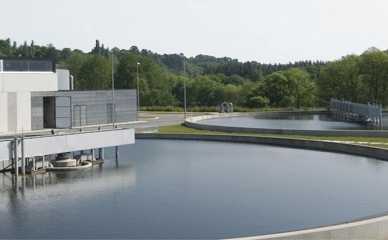
The need to minimize anthropic pressures on water bodies requires that the design of new urban drainage and sanitation systems, and the operation of existing ones, be reviewed and their function and behavior analyzed in both dry and rainy weather.
Unitary System Discharges (USD) in rainy weather are considered by the WFD and by the Spanish legislation as «significant pressures» and therefore they must be analyzed and reduced.
Rainwater is associated with three types of pollution phenomena:
a) Direct mobilisation by runoff water of pollution (generally diffuse) from urban or industrial areas towards aquatic environments.
b) Mobilisation of pollution deposited during dry periods in the sewerage system (sediments, biofilms, etc.).
c) Alteration of the processes of the different stages of the WWTP with the consequent loss of performance.
The three previous phenomena, most of the times coinciding in time, can imply important impacts on the aquatic environments.
Engineering solutions to this problem require an integrated analysis of all the elements involved; from the climate regime, through the basin and the sanitation and drainage system, to the receiving natural environment must be studied together.
Understanding the functioning of the structure and processes of each of the above subsystems is necessary to develop an integrated model that allows the analysis of the problem, the simulation of strategies and the search for optimal solutions from the environmental point of view.
The GEAMA-EHS is a reference in Spain in the measurement and characterization of the pollution mobilized in sanitation and drainage systems in rainy weather, a subject on which it has been working for more than 15 years. It has the most important database of pollution in rainy weather in Spain. Currently, it works for several administrations (Aguas de Galicia, Hydrographic Confederations, Ministry of Agriculture, Food and Environment, …) and developing technical regulations for the dimensioning and operation of infrastructures, regulations that are a reference at a national level (ITOHG).
Specific lines of research
– Characterization of pollution of runoff from urban and industrial areas in rainy weather.
– Control of the flows (flows and pollution) of runoff water at source by means of Sustainable Urban Drainage Techniques (SDUS).
– Hydrological diagnosis of urban and industrial areas and preparation of hydrological rehabilitation plans through the integration of TDUS.
– Characterization and treatment of runoff from highways and roads with high traffic intensity.
Specific Technical Assistance actions or products
Characterization of pollution flows in rainy weather in rainwater drainage systems:
– Analysis of the drainage basin and development of numerical simulation models of flows and pollution (SWMM or Infoworks software).
– Instrumentation of control sections (draughts, flows, contamination by means of sampling or continuous probes).
– Calibration of numerical models.
– Analysis of solutions looking for the optimum environmental cost/benefit.
Proposal of solutions, sizing and design of Sustainable Urban Drainage Techniques.
Characterisation and proposal of control and treatment systems for motorway run-off water.



